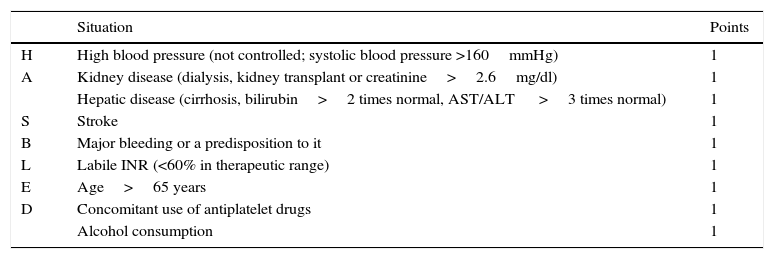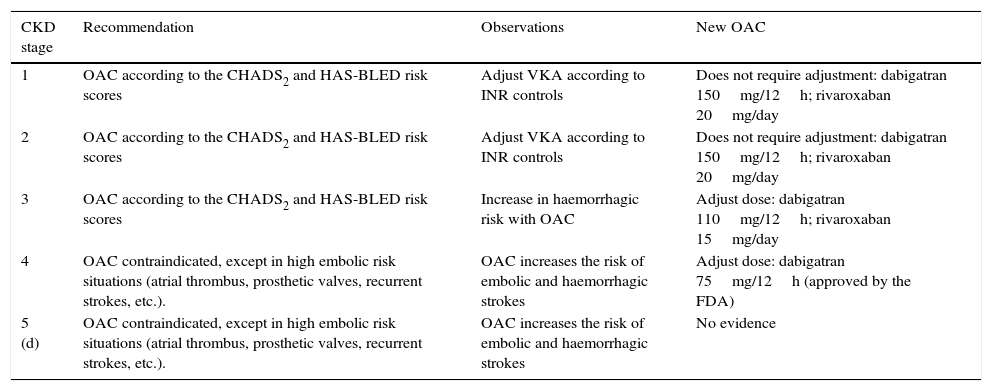Atrial fibrillation is a common finding in patients with chronic kidney disease (CKD), which increases markedly the embolism risk. The CHADS2 and HAS-BLED scales, used in the general population to assess the risk/benefit of oral anticoagulation (OAC), underestimate respectively the risk of embolism and haemorrhage in CKD, making it difficult to decide whether to use OAC or not. Based on the available evidence, it seems indicated to use OAC in stage 3 CKD, while it is controversial in advanced stages. New OAC such as dabigatran and rivaroxaban have been approved in stage 3 CKD but their role is still somewhat uncertain.
La presencia de fibrilación auricular en pacientes con enfermedad renal crónica (ERC) resulta un hallazgo frecuente que aumenta de forma considerable el riesgo embólico. Las escalas CHADS2 y HAS-BLED, utilizadas en la población general para valorar el riesgo/beneficio de la anticoagulación oral (ACO), infraestiman, respectivamente, los riegos de embolia y hemorragia en la ERC, haciendo complicada la indicación de ACO en estos pacientes. Con la evidencia disponible, parece indicada la ACO en ERC estadio 3, siendo controvertido su uso en estadios más avanzados. Si bien resultan prometedores los nuevos ACO, dabigatrán y rivaroxaban, aprobados para ERC estadio 3, su papel esta aún por esclarecer.
Artículo
Comprando el artículo el PDF del mismo podrá ser descargado
Precio 19,34 €
Comprar ahora









